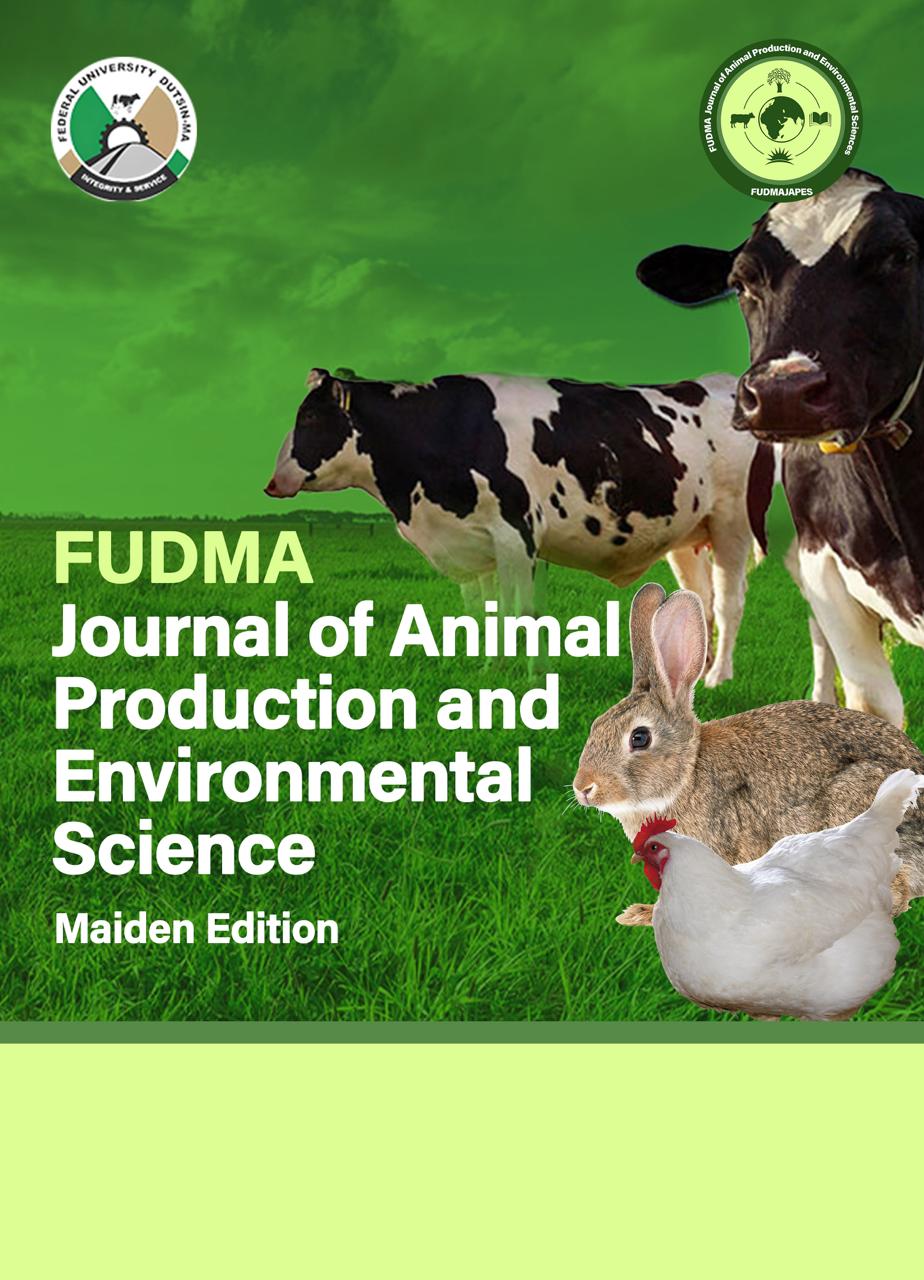Evaluation of Growth Performance, Carcass Characteristics and Blood Profile of Broiler Turkeys Reared Under Different Housing Systems
DOI:
https://doi.org/10.33003/japes.2025.v1i1.145-154Keywords:
Haematology, Serum, Carcass Characteristics, Mortality, Indoor, OutdoorAbstract
The experiment was conducted at the Livestock Teaching and Research Farm, Federal University Dutsin-Ma, Katsina State. A total of 48-day-old poults were obtained from a reputable commercial hatchery and the poults were reared for 4 weeks indoors. At the end of the fourth week, the poults were moved to the experimental pens. The poults were placed in a 2 x 2 factorial arrangement in a completely randomized design (CRD). The result indicated that thereweare significant (P < 0.05) differences between the sexes of the turkeys in terms of initial body weight, final body weight, weight gain and total feed intake. The males having the highest values as compared to the female turkeys. Feed conversion ratio and mortality were similar between the two sexes. For the housing, initial body weight and total feed intake shows a significant (P > 0.05) differences among the treatments. This means that final body weight, weight gained, feed conversion ratio and mortality are statistically the same. The carcass study revealed that live weight, dress weight and dressing percentage (LW= 9.54 - 11.52, DW= 6.74 – 8.70, DP= 70.58 – 75.48%) have a significant (P > 0.05) differences among the treatments while for the housing, there is no significant differences across all the treatments. While the result of the haematological concentrations of WBC, H and L obtained were influenced (P<0.05) by sex. However, all other parameters such as PCV, Hb, M and E were not affected by the sex and were within the normal range of turkeys. Furthermore, haematological study conducted in this regard revealed that all parameters were not influenced (P>0.05) by the housing systems employed in this study although. In addition, the result of the study revealed that GLU, TP, TC, HDL, TG, TP, TB, CB, ALT, Alb and Glo were not affected by sex and housing.






